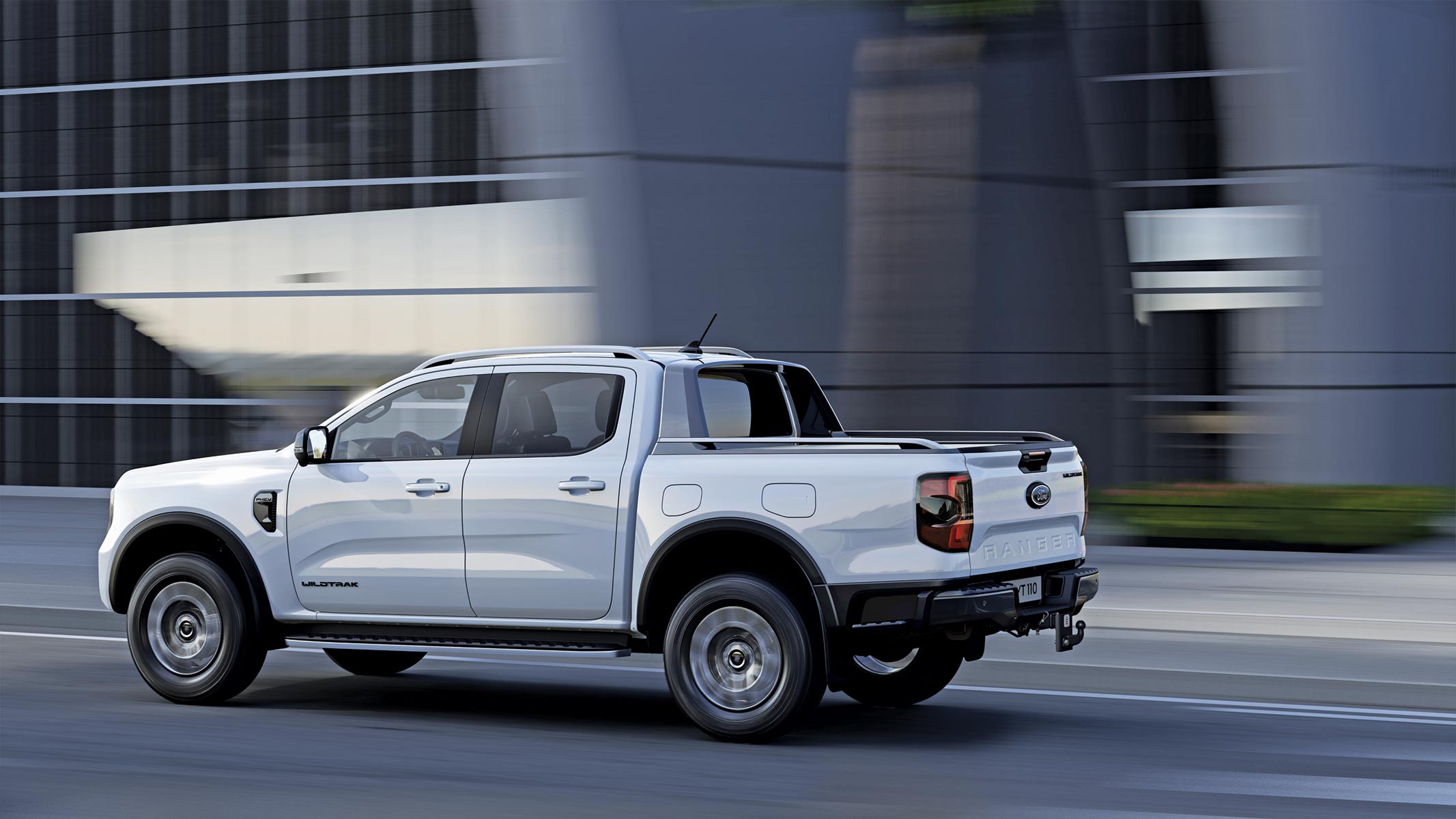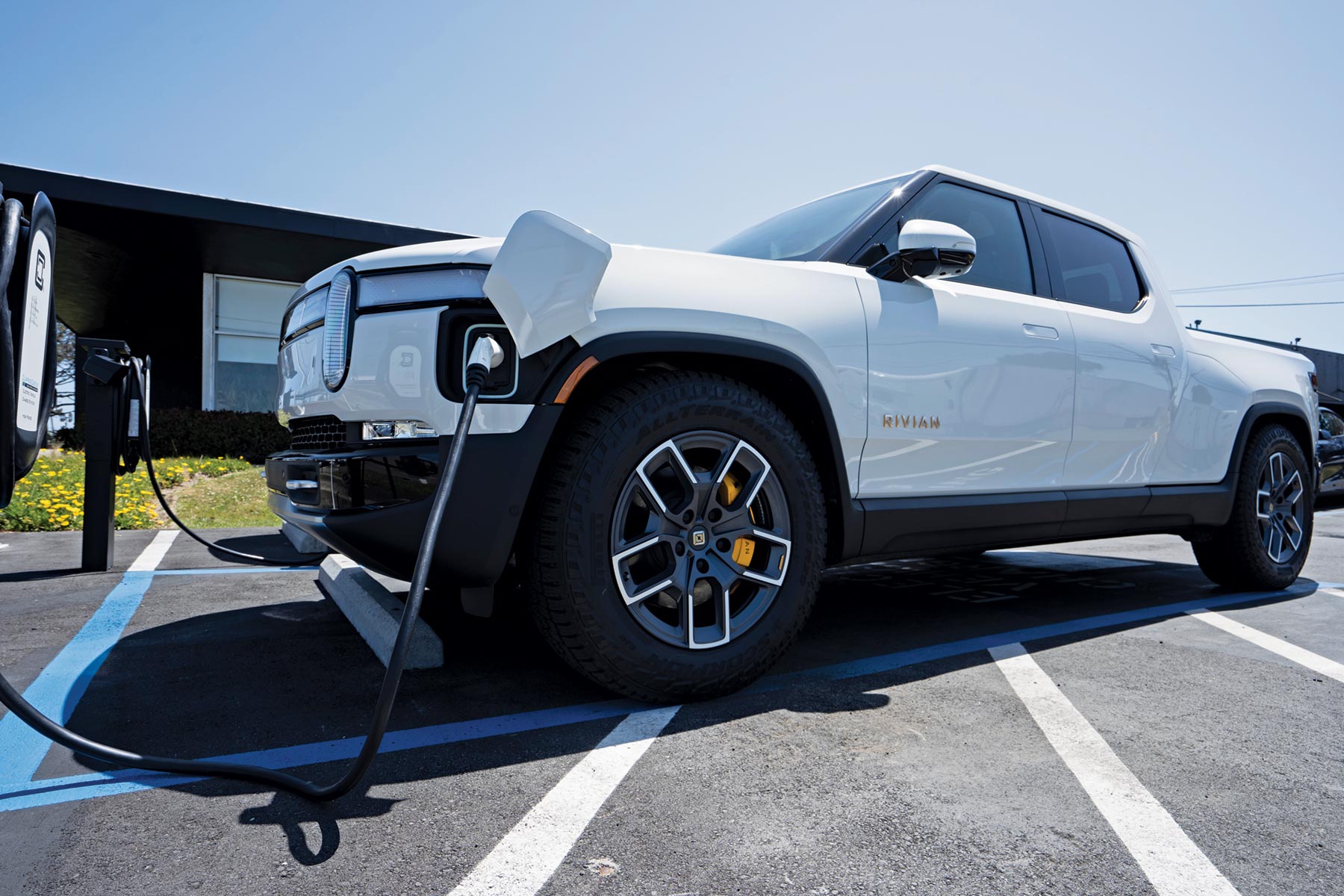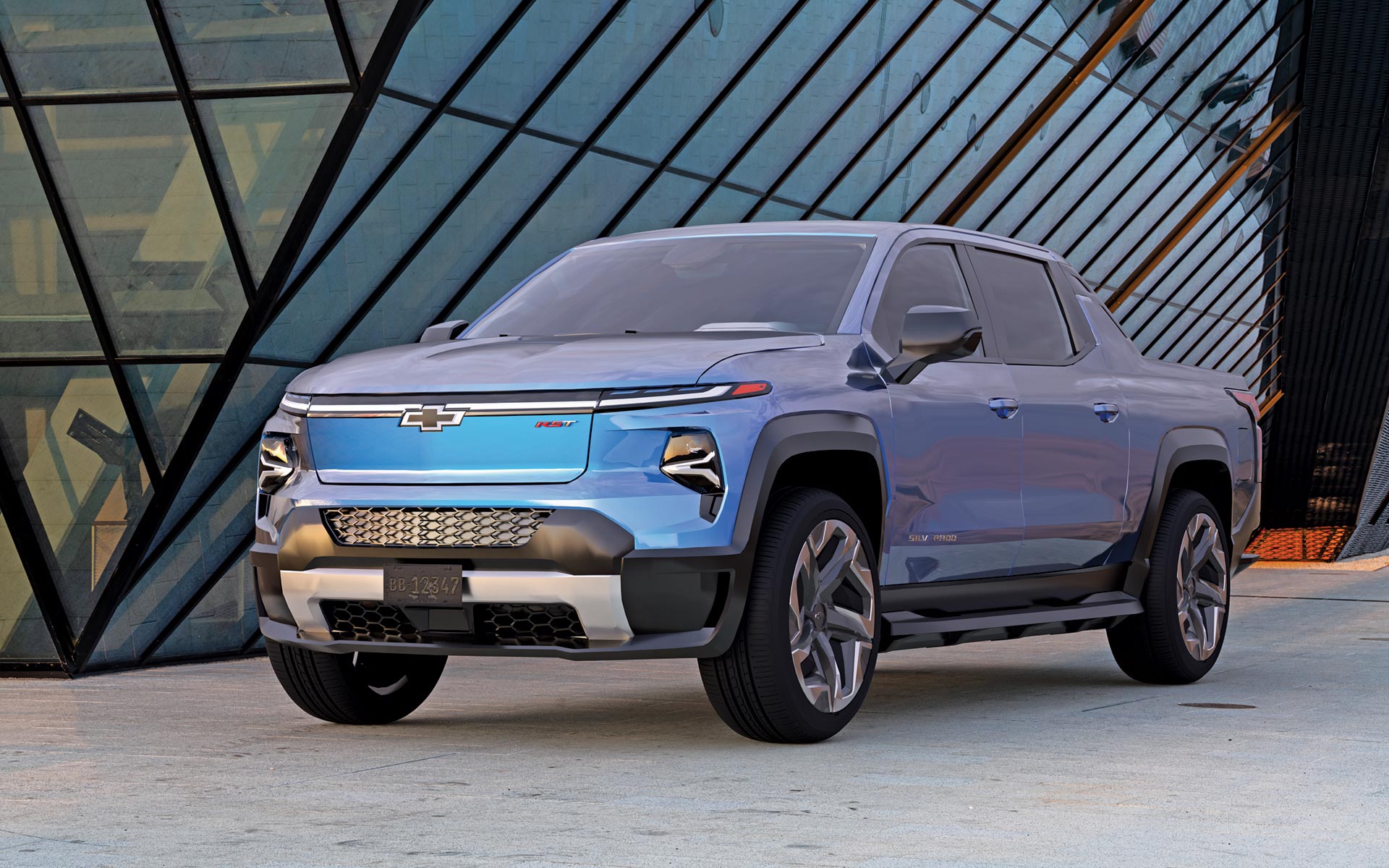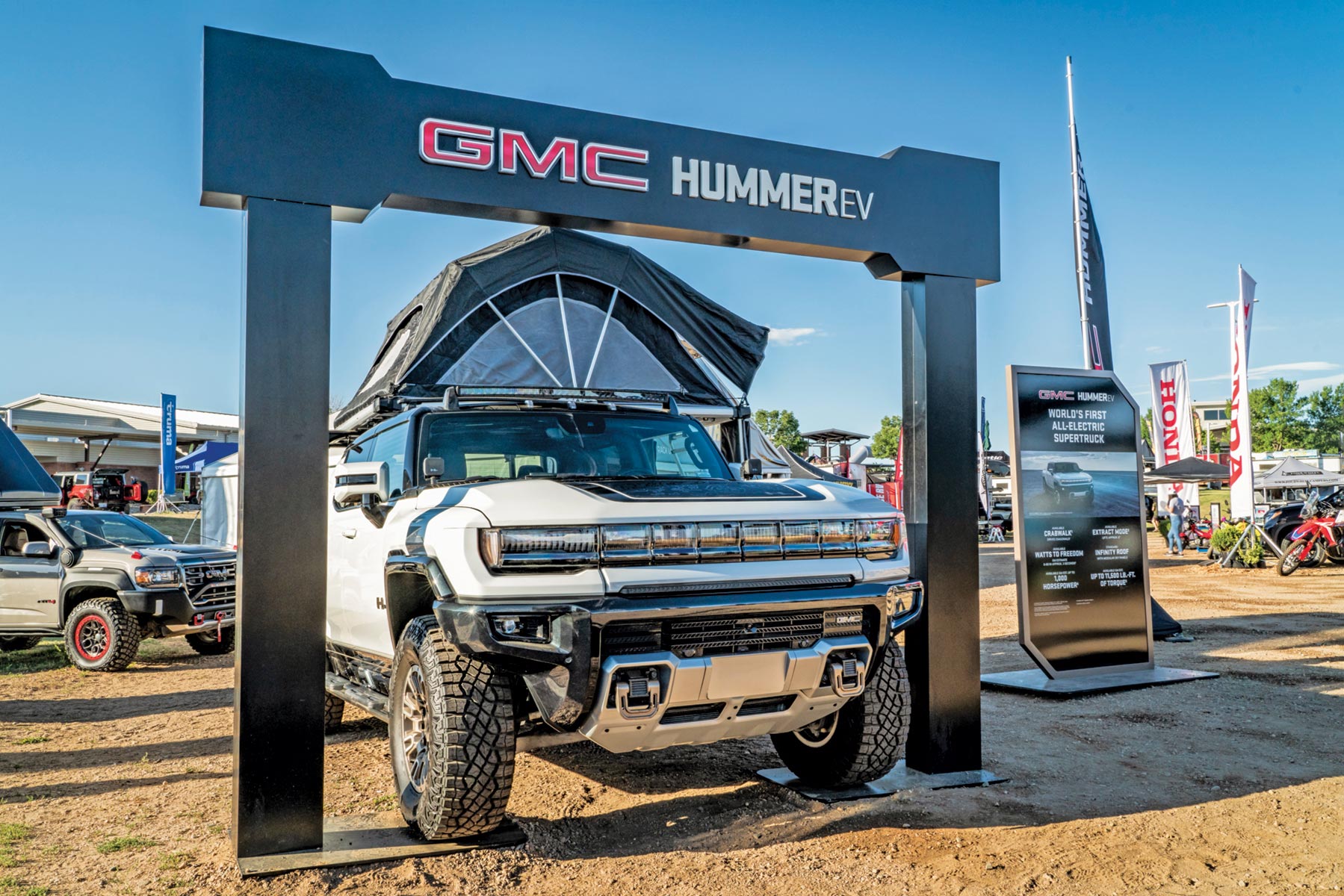:
Future of Electric Towing Vehicles (EV)
The car industry is in the grip of a renewables revolution that will change the face of towing as we know it. With the meteoric rise of electric vehicles (EVs) globally, it’s only a matter of time before big fossil fuel-thirsty SUVs are on the nose in Australia.
While EV innovation has a way to go before it can reliably pull a full-size caravan cost effectively here, like it or not, change is coming. And it’s long overdue, as Australia lags behind the rest of the developed world in transitioning to a sustainable vehicle future.
The case for EVs
Australia needs to clean up the automotive industry in order to meet its 2050 net zero greenhouse gas emissions target. In 2022, the transport sector produced almost one-fifth of the country’s carbon emissions, with a 60 per cent share attributed to passenger cars and light commercial vehicles. Without intervention, the transport sector is projected to be Australia’s largest emissions producer by 2030.

KIA EV9
With these sobering statistics in mind, the race is on to transition to vehicles powered by electricity, which the Federal Government hopes will be 82 per cent derived from renewables within six years.
Last year, 7.2 per cent of new cars sold in Australia were all-electric, growing to about 16 per cent when including hybrids. Yet SUVs and light commercial vehicles accounted for more than three quarters of new-car sales, according to figures from the Federal Chamber of Automotive Industries, with the Ford Ranger the country’s top-selling vehicle.
While EV sales has doubled in recent years, Australia still lags behind the rest of the world, says Professor Hussein Dia, a transport engineering expert at Swinburne University of Technology.
“We’re still below the global average,” said Professor Dia, who heads Swinburne’s Future Urban Mobility Research Program. “The global average is around 12 to 14 per cent. You have places in Europe where it is maybe 20 per cent, and you have Norway – [with] almost 87 per cent of all new vehicles being EVs.”
In February, some headway was made with the Federal Government belatedly releasing its proposed model for a New Vehicle Efficiency Standard, mooted to come into effect from 1 January next year. If legislated, the standard – penalising car manufacturers that produce large volumes of heavy-emitting vehicles – will stimulate greater supply and choice of EVs in Australia.
“Australia and Russia are the only countries in the developed world that don’t have these [fuel efficiency] standards,” Professor Dia said. “This means that Australia is essentially a dumping ground for all polluting vehicles that cannot be sold overseas in markets or countries that do have these emissions standards, like the US and Europe.”
The towing dilemma
More EV choice and supply is a good thing for consumers, but there is an elephant in the room and that’s towing. Currently there is no all-electric vehicle in the Australian market with the grunt to pull a large three-tonne-plus trailer.
Ross De Rango, head of energy and infrastructure at the Electric Vehicle Council, says large battery electric vehicles (BEVs) capable of towing big vans and boats for long distances are on the horizon, they’re just not available in Australia yet.
“Many EVs on Australian roads today can tow, with the caveat that when towing there’s a range impact, and most of the ones that can tow are limited to about 1500-1600kg. So, you’ll see electric SUVs towing camper trailers and small vans today, but it’ll be a while before big caravans are routinely being towed long distances around the country by pure battery EVs.
“Plug-in hybrid electric vehicles (PHEVs) are likely to play a significant part in the transition to EVs for drivers who sometimes tow heavy things long distances. These vehicles can typically cover 50-100km on battery power, drawn from an EV charger or power point, and have a petrol or diesel engine for the long-distance drives. The Ford Ranger PHEV is an example of this, coming in 2025, and suited for large caravans with 3.5-tonne towing capacity. The Mitsubishi Outlander has been available in Australia as a PHEV since 2014.”

2025 Ford Ranger Plug-in Hybrid
The roadblocks
So, what’s the hold up with EV innovation for heavy rigs? Not surprisingly it’s weight and drag, and these two factors ultimately impact range – the maximum driving distance possible before the battery needs recharging. Heavy vehicles need big, heavy, expensive batteries. Greater battery power comes at a cost of more weight, which ultimately requires more power, which further diminishes range. Coupled with the weight and drag of a large caravan, transitioning heavy vehicles to electric power becomes a more complex, and expensive, proposition.
The biggest contender for the Australian market is the Ford F-150 Lightning, packing a towing capacity of 4.5 tonne and a (non-towing) range of 480km. This would decrease significantly with a large caravan in tow. The battery alone weighs about 820kg – more than a Volkswagen Beetle - and accounts for more than a quarter of the vehicle’s kerb weight (2.9 tonne). While the Lightning is available in the US for a starting price of about US$50,000 (AU$77,000), Ford is tight-lipped on a launch date for Australia, which, like most imported cars, would involve modifying for right-hand drive.

Ford F-150 Lightning Electric Truck
Also yet to firm any plans for entering the Australian market are competitors GMC Hummer (5.4-tonne towing capacity), Rivian R1T (5 tonne), Chevrolet Silverado (4.5 tonne) and the much-hyped Tesla Cybertruck (5 tonne), among others. Currently, the highest towing capacity of an all-electric vehicle sold in Australia is about 2.5 tonne, available with the Kia EV9 AWD, which has a starting price of about $120,000.
The cost of EVs is a deterrent for many, but prices are expected to fall as innovation evolves. After cost, range anxiety is the biggest barrier, especially in Australia where vast parts of the country are remote, distances great and charging infrastructure immature. But again, this is improving. There are more than 5000 EV chargers scattered across the country, including about 800 fast and ultra-fast plugs. In a partnership with the NRMA, the Federal Government is in the early stages of installing public fast chargers at 117 sites on major highways at 150km intervals. A further 1000 are expected to come online in the next 36 months.

Rivian R1T truck is charging at a Rivian service center
This will appease some would-be EV drivers but is unlikely to satisfy off-roaders who enjoy exploring remote pockets of the country for extended periods. Another roadblock for caravanners is charging station design and the limited supply of drive-through bays. Having to unhitch to charge is not practical, nor is taking up multiple changing spaces with a large rig. Queue anxiety and lag time are also cons.
The benefits
After the higher cost upfront, EVs are more economical than internal combustion engines (ICEs) in the long term. Not only are they cheaper to run, but they are also much cheaper and easier to maintain and less susceptible to break downs.

Chevrolet Silverado EV
“[With] electric vehicles the motors have fewer moving parts … the maintenance is very, very low,” Professor Dia said. Contrary to popular belief, EVs are also more powerful than ICE cars, providing far superior torque. “With petrol and diesel vehicles the maximum torque is not instantaneous, you have to accelerate the vehicle and it takes a while until you reach the maximum torque where the vehicle is travelling at top speed and maximum acceleration,” Professor Dia said. “With electric vehicles the torque is almost instantaneous.”
He says ICE vehicles lose 70 per cent of their power in the combustion process, with only 30 per cent powering the wheels. With EVs the power/loss ratio is reversed. EVs can be charged (slowly) from 10A and 15A plugs, including off-grid from solar-powered caravan batteries. Conversely, EV batteries can also provide 240V charge for on-the-road appliances and devices, and even top up the caravan batteries.
The EV trailblazers
A small band of trailblazers is already testing the limits of EV adaptability for Australian touring conditions, albeit in small caravans and campers.
Australian Electric Vehicle Association ACT branch committee member Peter Campbell has a 2010 Jayco Flite camper trailer towed by a Hyundai Ioniq 5 EV AWD (1.6-tonne tow rating) and achieves a towing range of about 290km. He says efficient (non-remote) EV touring requires a change in mindset – doing multiple partial charges rather than “filling up”, and using a mix of expensive, super-fast (350kW DC) highway chargers, cheaper slow chargers (25kW) and ordinary 10A power (2.3kW).

GMC HUMMER EV pickup, world's first all-electric supertruck with a roof tent
“A common rookie mistake is to think like you would with a petrol car where you just fill up to full and off you go,” Campbell says. “All RVs get a slower charging rate the closer they get to full … so it makes more sense to charge up to about 80 per cent – 20 minutes is enough for a toilet break and to find a coffee or something … then drive on for another few hundred kilometres, and then charge up to 80 again, rather than hanging around for twice as long to get to 100.”
Campbell recently drove 600km in a day “with no difficulty at all”, using a slow overnight charge, then having two partial top-ups at 200km intervals. He can also “trickle feed” from the camper’s 10A plug at caravan parks, providing enough charge over two days for the next 250km journey.
Campbell says while EV caravanning isn’t for everyone, future innovations should focus not on bigger batteries, but on making caravans more compact and aerodynamic. “There’s always someone who insists that they’re (EVs) completely impractical, and until you can tow a block of flats across the Simpson Desert it couldn’t possibly be any use,” he says.
“I don’t think it’s (EV innovation) there yet for towing the very big, boxy, heavy caravans that have got every possible luxury in them. On the other hand, yes, I think it is there for many of the trips that many people do in more modest vehicles, like camper trailers, where the roof goes down low so there’s much less aerodynamic drag and much less effect on range.”
Catherine Best is the author of Ultimate Caravan Trips Australia.
Next steps
At Hema Maps, we strive to provide the most comprehensive and accurate maps and guides for outdoor enthusiasts looking to explore Australia's natural wonders.
Did you find this information useful? If so, please share it with your fellow explorers. Whether it's by sms, social media, or email, your friends and fellow adventurers will appreciate the valuable tips and insights we've shared.
11 comments




I own a 1996 Suzuki Sierra that cost me $10,000 back in the day. Despite being almost 30 years old, it has never had any issues during my off-road travels around Australia. Therefore, I disagree with your argument that ICEs are unreliable.
Furthermore, I have concerns about how people living in large apartment blocks will charge their EVs overnight. The cost of infrastructure required to solve this issue is likely to be significant. At present, owning an EV seems to come with more issues, inconveniences, impracticalities and expenses than ICEs. In my opinion, EVs have a long way to go before they are value for money and can compete with my trusty Suzuki Sierra.
Despite all the hype surrounding electric vehicles (E.V.s), scientists say they will have less than a 1% impact on the environment. It’s worth noting that similar individuals who support E.V.s likely protested against nuclear power, which is one of the cleanest energy sources available for powering entire cities. As a result, we still have coal-powered stations running for the past 30-40 years. To run all the cities in the country without relying on coal substitution, we would need to develop enough wind farms, solar panels, hydroelectricity, and other alternative sources of energy. Unfortunately, this hasn’t happened yet, so environmentalists have done more harm than good and are responsible for the continued use of coal-powered stations.
Consider the energy required for all the airliners, cargo ships, diesel transport trains, and industries. Until we find a better solution for these, any gains from E.V. use will be offset by the vast amount of energy required for E.V. infrastructure and manufacturing. Therefore, it’s all just hype until we can address these critical issues.
This new paradigm will take a big shift in culture and a few changes to driving habits. The technology will improve enough to do what a vast majority of people do. But most notably people will most likely stop towing around apartment blocks. Towing air is ridiculously inefficient and costly.
The new paradigm has so many advantages that are difficult to see from a fossil fuel paradigm. Remote communities running off their own power rather than reliance on diesel generators. That same power bringing in money that would have normally left for the Middle East on a fuel truck. Community storage of batteries on wheels will bring resilience and self reliance. And buffer the influx of seasonal travelers. The solutions are there waiting to be deployed. Arena is already funding many projects. With an over capacity of energy it’s going to be interesting to see what these communities can come up with to utilise what will eve be free electricity.
I agree with almost all that has been stated above. EVs are the toys of the inner city. I have a Lexus XL570 that can be driven from the Gold Coast to Sydney without refilling. The Earth has heated and cooled many times over the last 100,000 years. We are coming out of a mini Ice Age at present. The BOM can’t predict the weather a few days out but they pretend they can predict the climate in 50 years.
PS: Norway is not that much bigger than Tasmania.
The big problem for Australia is the distances and remoteness. What is to be gained from having to charge an EV at a remote location from a diesel powered generator – solar/battery based charging stations do not have the capacity to be able to re-charge even a modest number of EV’s on the road. A ‘glitch’ in the solar supply, ie an overcast day, has a snowball effect in being able to keep up. As for ‘chip-oil’ based generators; I love my chips but can’t eat enough to get me out of my drive-way. It’s a marketing con – while you wait for the EV to charge you eat more chips!
Rhetoric check please!
It takes 7 tonnes of carbon emissions to build one electric vehicle. Oh, if only they grew on trees! By the time they become the norm, they won’t be cheaper to run. With more electronics involved, there are higher chances of things going wrong. If you have an accident in an electric vehicle and the batteries catch on fire, two things could happen: 1) you’re toast 2) disabled or brain-damaged from the emitted chemicals. Everyone looks forward to new developments, but unless it’s practical, safe and affordable, you can say what you like. The interesting thing is that most of those who now own electric vehicles, once drove carbon monoxide-emitting vehicles and are demonizing everyone else who still drive ICEs. It’s all hypocrisy! We’ve heard it all before. Coal is your biggest enemy – go target them!
I’m concerned about the longevity of EV vehicles. I know that a Landcruiser is good for 30 years if maintenance is kept up (we have a fleet of them at work). I have read that EV cars will probably need to be traded in every 8 years or so because of battery degradation. So if my maths is correct one Landcruiser is equivalent to 3 almost 4 EV’s in longevity. What is worse for the environment? One car that you can use for a long time or 4 short term propositions? Surely manufacturing 4 EV’s is worse when it comes to using the earths resources?
No mention of hydrogen. I think it will play an important part for Australian, both as a ICE fuel and as an electron generator. What about renting batteries and changing out battery packs for trucks and cars.
In addition to the purchase cost and the running costs, we should also consider the life cycle costs (replacement and/or recycling the battery components), and the ethical costs (eg, it is alleged that boys mine the lithium for a pittance in Africa)
Currently towing a 3.5ton van , there is no Electric vehicle FIT FOR PURPOSE with lots of infrastructure issues to contend with.
Can’t get from coast to great dividing range (196km )without re charging and probably not then (no available chargers), as shown in the US with a 2ton van 125km was the limit before needing a recharge.
Infrastructure needs to improve, more chargers, vehicles need better range towing and not having to disconnect van to charge.
Lots need to improve.
If this report is all true then we won’t need Hema Maps anymore because very few will be travelling with caravans. Stopping every 200k or so to charge up won’t be too many peoples idea of a holiday.
You’ve gotta be kidding, this technology is years off. The public are test pilots for EV companies who can’t get it right atm. When EV’s can achieve towing distances are strong and reliable off road and with less stops for charging it’s not the equivalent. it’s not feasible in the bush either. Took approx 30 years after the first petrol & diesel vehicles were made to get where they are today through refinement. EV’s will be the same, it’s not happening it’s just a push for green money. ICE vehicles will be here for a long long time. Sick of governments pushing EV’s and companies making them for profit. It’s the new business venture. Look at car companies currently changing or slowing down or shopping EV manufacturing. When the defence forces change to EV vehicles, tanks and infantry movement or deploy electric planes maybe I’ll think about it.